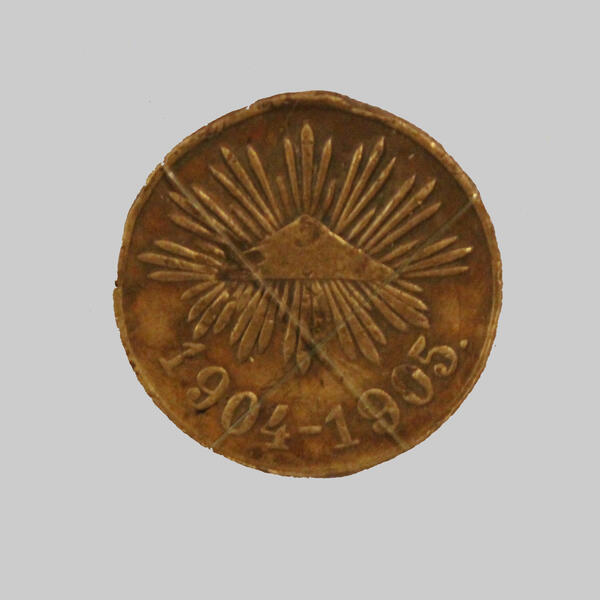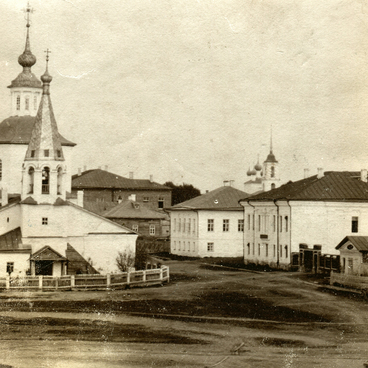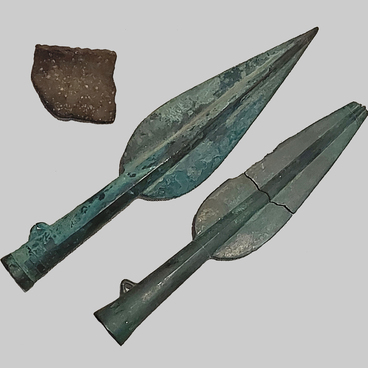Medal ‘In the memory of the Russo-Japanese war’ is the medal of the Russian Empire for awarding military personnel who participated in the Russo-Japanese War, as well as for awarding medical personnel and priests in service, civilian persons who distinguished themselves in military actions. It was established on 21 January 1906 by the decree of Emperor Nicholas II. The medal had three main variants made of different metals: silver, bronze, and dark bronze (copper). Medals from different metals were awarded to different categories of award recipients.
The silver version was intended to reward the defenders of the Kwantung Peninsula (Guangdong) and Port Arthur (now Lushun). The award was given to all persons involved in the military events, including the people of Port Arthur who were involved in its defense. A light bronze medal was awarded to all soldiers and sailors, regardless of rank or position, including volunteers who had been in at least one battle against the enemy on land or at sea. The medals of dark bronze (copper) were awarded to the military, who did not take a direct part in the battles, but were in service in the active armies and until the day of ratification of the peace treaty in the Far East and along the Trans-Siberian Railway and the Samaro-Zlatoust Railway, but only in those areas that were under martial law. Military, sailors, border guards, militiamen, priests, doctors were awarded the medal in the same way as other variants of the medal, if they were on duty in the military or medical establishment.
The diameter of the medal from the collection of the Belozersk Regional Museum of Local Lore is 28 millimeters. On the front of the medal the All-seeing Eye is depicted, surrounded by rays. In the lower part, along the edge, the inscription says ‘1904-1905’. On the back side the horizontal inscription in Slavic type in five lines: ‘May god lift you up at the right time’. There were many variants of the medal, due to the fact that the medal was allowed to be produced by private workshops. The main circulation was made at the Saint Petersburg mint. On the 1st of March, 1906, the wounded or shell-shocked in the Russo-Japanese War, were given the right to wear medals on a ribbon with an additional bow of the same colour by the decree of Nicholas II.
The silver version was intended to reward the defenders of the Kwantung Peninsula (Guangdong) and Port Arthur (now Lushun). The award was given to all persons involved in the military events, including the people of Port Arthur who were involved in its defense. A light bronze medal was awarded to all soldiers and sailors, regardless of rank or position, including volunteers who had been in at least one battle against the enemy on land or at sea. The medals of dark bronze (copper) were awarded to the military, who did not take a direct part in the battles, but were in service in the active armies and until the day of ratification of the peace treaty in the Far East and along the Trans-Siberian Railway and the Samaro-Zlatoust Railway, but only in those areas that were under martial law. Military, sailors, border guards, militiamen, priests, doctors were awarded the medal in the same way as other variants of the medal, if they were on duty in the military or medical establishment.
The diameter of the medal from the collection of the Belozersk Regional Museum of Local Lore is 28 millimeters. On the front of the medal the All-seeing Eye is depicted, surrounded by rays. In the lower part, along the edge, the inscription says ‘1904-1905’. On the back side the horizontal inscription in Slavic type in five lines: ‘May god lift you up at the right time’. There were many variants of the medal, due to the fact that the medal was allowed to be produced by private workshops. The main circulation was made at the Saint Petersburg mint. On the 1st of March, 1906, the wounded or shell-shocked in the Russo-Japanese War, were given the right to wear medals on a ribbon with an additional bow of the same colour by the decree of Nicholas II.



